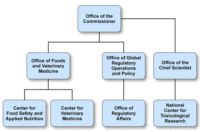In two recent studies, the US Government Accountability Office (GAO) looked at USDA’s efforts to ensure strong pathogen standards for certain poultry and pork products and FDA’s progress in managing the risk of elemental arsenic in rice products. Both studies show there is work to be done to make research and rules more definitive, conclusive and final.
In the GAO study, “USDA Should Take Further Action to Reduce Pathogens in Meat and Poultry Products,” the GAO found that while USDA has developed standards limiting the Salmonella and Campylobacter permitted in certain meats and poultry, it has not developed standards for other widely available products, such as turkey breasts and pork chops.
Further, GAO says, “USDA’s process for deciding which products to consider for new standards is unclear because it is not fully documented, which is not consistent with Federal standards for internal control.” Too often, USDA has delayed action when it comes to developing standards. For example, in 2016, USDA concluded new standards were needed for certain poultry products to reduce Salmonella after reviewing outbreaks from these products in 2011, 2013 and 2015—outbreaks that killed one person and sickened a total of 794.
USDA is taking steps to address the challenges GAO identified in 2014 for reducing pathogens in poultry products, but these challenges are ongoing and could affect USDA’s ability to reduce pathogens in meat as well. In addition, one challenge to be overcome is the level of pathogens in poultry products attributable to poor farm practices. GAO recommended in 2014 that USDA guidelines on the practices for controlling Salmonella and Campylobacter on farms include information on the efficacy of each of these practices.
Since GAO’s 2014 report, USDA revised its guidelines to include information on the effectiveness of on-farm practices for controlling pathogens in poultry (2015) and beef cattle (2017). However, USDA’s draft guidelines for controlling Salmonella in hogs do not contain such information. By including this information as it finalizes its guidelines, USDA could better inform the industry regarding best practices on hog farms.
USDA’s FSIS has transitioned to an increasingly science-based, data-driven, risk-based approach in its rulemaking process. However, until FSIS clearly documents its process for deciding which products to consider for new pathogen standards, including the basis on which such standards should be made, FSIS will not have assurance that its decisions will be risk based and that agency personnel will know the process when making such decisions.
Therefore, GAO is recommending that USDA document its process for deciding which products to consider for new standards and that it include information on the effectiveness of on-farm practices in its guidelines for Salmonella control in hogs.
FDA’s work unfinished on arsenic
According to the GAO study, “Federal Efforts to Manage the Risk of Arsenic in Rice,” in 2013, the National Research Council (NRC) of the National Academy of Sciences and more recent key scientific reviews have shown that long-term ingestion of elemental (inorganic) arsenic can lead to adverse human health effects, such as cardiovascular disease. NRC stated that evidence suggests that food, particularly rice, may be a significant source of elemental arsenic, but consumption levels vary widely, making it difficult to estimate arsenic intake from rice.
In 2016, FDA issued a risk assessment about the human health effects from long-term ingestion of arsenic in rice and draft guidance recommending the industry not exceed 100 ppb of inorganic arsenic in infant rice cereal. (Note: FDA had also set an “action level” for arsenic in apple juice of 10 ppb.)
However, FDA has not updated the risk assessment on rice in infant cereals, which was informed by a review of scientific studies published before February 2015, nor has the agency finalized the draft guidance.
FDA officials stated that they may update the risk assessment on newly available information and consider public comments before finalizing the draft guidance, though they have not provided a timeline for either.
In light of these issues, GAO is making recommendations to FDA and USDA, specifically:
- FDA should develop a timeline to update the risk assessment on arsenic in rice.
- FDA should develop a timeline for finalizing the draft guidance on arsenic in infant rice cereal.
- FDA should develop a mechanism for working with relevant agencies to identify their roles and responsibilities for coordinating risk assessments for contaminants in food (including arsenic in rice).
- FDA should work with USDA to develop a mechanism to detect contaminants in food (including arsenic in rice).
- The Secretary of Agriculture should work with FDA to develop a mechanism to coordinate the development of methods to detect contaminants in food (including arsenic in rice).
For more information, see these GAO studies on food safety at www.gao.gov:
“USDA Should Take Further Action to Reduce Pathogens in Meat and Poultry Products,” (www.gao.gov/products/GAO-18-272).
“Federal Efforts to Manage the Risk of Arsenic in Rice,” (www.gao.gov/products).




